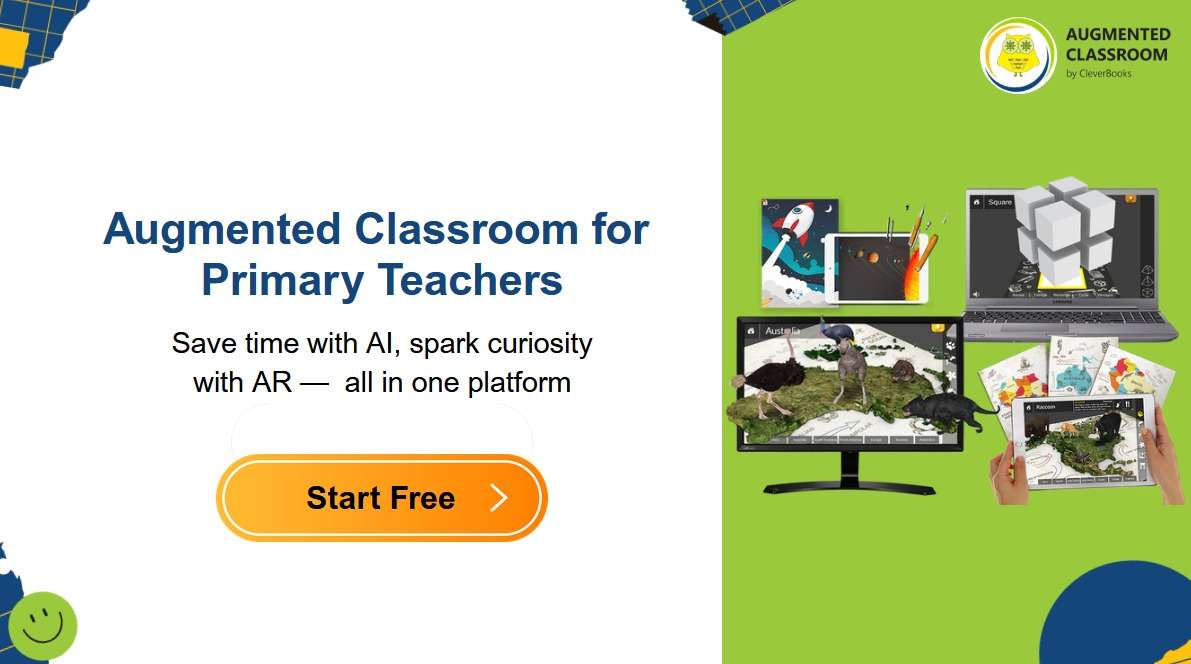If you’ve ever looked out over your classroom and noticed eyes glazing over, restless fidgeting, or wandering attention, you’re not alone. Many primary students struggle to stay focused — and it’s not always because they “don’t care.” Often, the reasons are hidden in how lessons are structured, delivered, and connected to their world.
Here are seven common attention-breakers in primary classrooms — and practical ways to fix them.
1. Lessons Feel Too Abstract
Young learners need to see and experience concepts before they truly understand them. A solar system diagram on the board might not stick, but exploring planets in 3D can make the same lesson unforgettable.
The fix: Use augmented reality (AR) tools and interactive visuals to make abstract ideas concrete.
2. Too Much Passive Listening
If students spend most of the lesson listening, their minds will eventually drift. Kids are wired to do, not just absorb.
The fix: Build in interactive moments — short discussions, AR activities, or AI-powered quizzes that give every child a chance to respond and stay involved.
3. Lack of Real-Life Relevance
Children learn best when they understand the “why.” Without a connection to their world, a topic can feel meaningless.
The fix: Use technology to show real-world applications. AI can help personalize content to connect with students’ own experiences, whether it’s showing how math applies to their favorite sport or linking geography to places they know.
4. Overload of Text-Heavy Materials
Dense pages of text can be overwhelming. Even eager readers sometimes struggle to focus when everything looks the same.
The fix: Replace static worksheets with interactive visuals, storytelling, or AR experiences that let students see and explore what they’re learning.
5. An Uninspiring Classroom Environment
A classroom that feels flat or predictable can quietly drain curiosity.
The fix: Add stimulating, discovery-driven moments. Simple tech-supported activities — like scanning a trigger image to reveal a 3D model — can spark surprise and reignite attention.
6. One-Size-Fits-All Teaching
Not every student learns at the same pace. While some tune out because they’re bored, others shut down because they’re overwhelmed.
The fix: AI insights can help you adapt the pace, difficulty, and even the format of content so each learner feels challenged, supported, and engaged.
7. Limited Opportunities for Active Discovery
Attention thrives when students are active participants. If lessons feel like something that just “happens to them,” focus quickly fades.
The fix: Give students ownership. Let them explore ecosystems in 3D, solve real-world challenges, or collaborate on interactive tasks where learning is hands-on and curiosity-driven.
Turning Passive Lessons Into Active Adventures
When you combine AR and AI with traditional teaching, you transform static content into experiences. Instead of memorizing disconnected facts, students interact, explore, and discover — making attention less of a battle and learning more meaningful.
And the best part? These tools don’t replace teachers. They amplify what you already do best: creating memorable learning journeys for your students.
Bottom line: If your students are losing focus, it may not be about discipline or motivation at all. With the right strategies — and a little help from interactive technology — you can turn even the most distracted classroom into a place buzzing with curiosity and attention.

